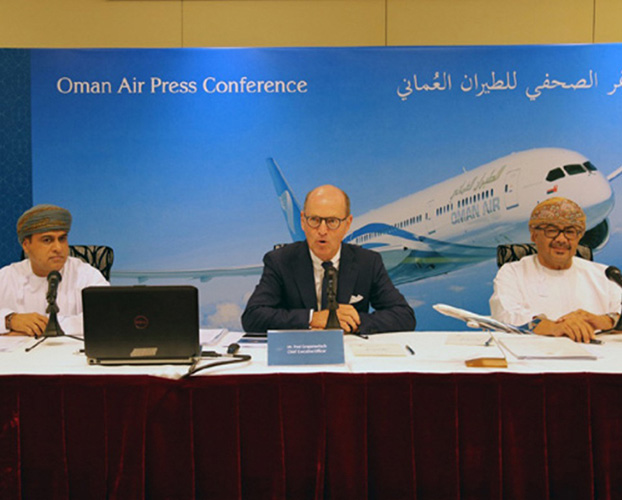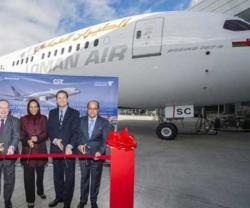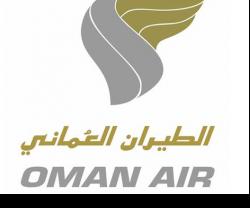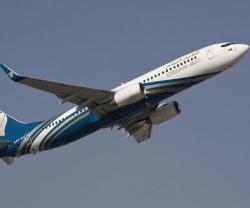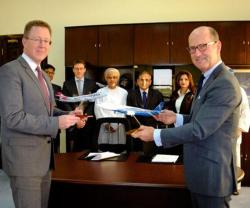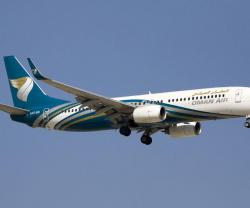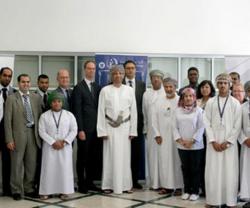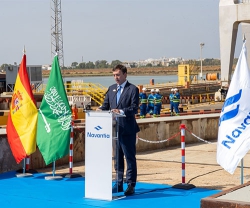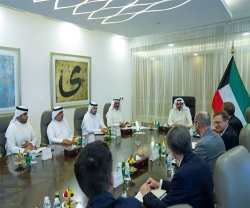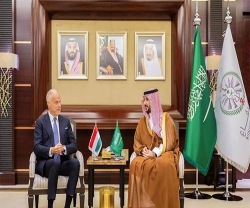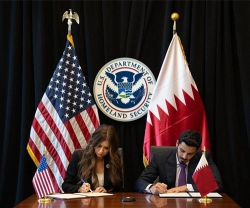Oman Air revealed its vision to “Become the Best” and its objectives to be a safe airline, increase revenues and reduce costs, while catering for growth and contributing to the Sultanate’s development.
Speaking at a recent press conference, Oman Air’s Chief Executive officer Paul Gregorowitsch delivered a key report on the airline’s progress and plans for continued expansion. Additional details were supplied by Chief Commercial Officer Abdulrahaman Al Busaidy, and Executive Vice President, Products and Brand Development, Abdulaziz Alraisi.
Gregorowitsch said: “With the invaluable support of Oman Air’s Board of Directors, we have a clear vision, achievable objectives and a set of values to which all our employees are committed. We are also delivering an ambitious and dynamic program of fleet and network expansion. This has seen the company take delivery of outstanding new aircraft, introduce a range of exciting new destinations and launch new products and services which contribute to a seamless passenger experience.”
“Despite substantial economic challenges, Oman Air is in a strong position to continue its progress towards becoming a successful, sustainable company of the highest quality: in other words, To Become the Best,” he added.
Oman Air’s fleet expansion program has already made significant progress. With the first of the new aircraft being delivered in the last quarter of 2014, Oman Air fleet size stood at 35 aircraft by January 2015. One year later, in January 2016, the fleet had increased in size to 41 aircraft. Currently Oman Air’s fleet consists of four Boeing 787 Dreamliners, six Airbus 330-300s, four Airbus 330-200s, five Boeing 737-900s, 21 Boeing 737-800, one Boeing 737-700 and four Embraer 175s. Oman Air has operated B737s for many years and the aircraft provide the backbone of the airline’s long and medium haul fleet. Furthermore, Oman Air was the first carrier in the Middle East region to operate the B737-900ER aircraft type.
Oman Air’s fleet size stands at 45 aircraft, with at least two more B737s expected to be delivered before the end of the year, and four more B787s due for delivery over the next two years.
Gregorowitsch also described how Oman Air’s network has grown in parallel with its fleet expansion. “Recent international destinations to be added to the airline’s network include Manila, Jakarta, Singapore, Goa, Dhaka and Mashhad, while Guangzhou in China will be launched on December 9, 2016. Frequencies have also been increased on many established routes, including Frankfurt, Paris, Zurich and London, whilst all Indian destinations now enjoy at least daily or double-daily services. In addition, we will be launching, Manchester, our second destination in the UK in our Summer 2017 schedule.”
Oman Air currently operates codeshare partnerships with Emirates Airlines, Ethiopian Airlines, Royal Jordanian, Turkish Airlines, Sri Lankan Airlines, KLM Royal Dutch Airlines, Garuda Airlines, Saudia and Thai Airways.
“We have no current plans to seek membership of one of the global airline alliances, but we will be developing some exciting tactical partnerships. As a result, we will be working closely with One World; with Star Alliance members Lufthansa, United Airlines, Turkish Airlines and with SkyTeam members Kenya Airways and KLM.”
The accelerated fleet and network growth has required significant investment in new aircraft and landing slots, Gregorowitsch noted. However, further major investment has also been made in many other areas of Oman Air’s operations.
Additional investments in a forthcoming new crew village at Muscat, crew reporting, flight simulators, headquarters infrastructure and management information systems are facilitating more effective delivery of Oman Air’s services, he added.
Gregorowitsch expressed his concern regarding the existing infrastructure at Muscat Airport which is affecting the growth initiatives of the National airline. He stressed the need for a second runway as soon as the new passenger terminal is inaugurated to cater for the planned growth and ongoing contribution to the national economy.

